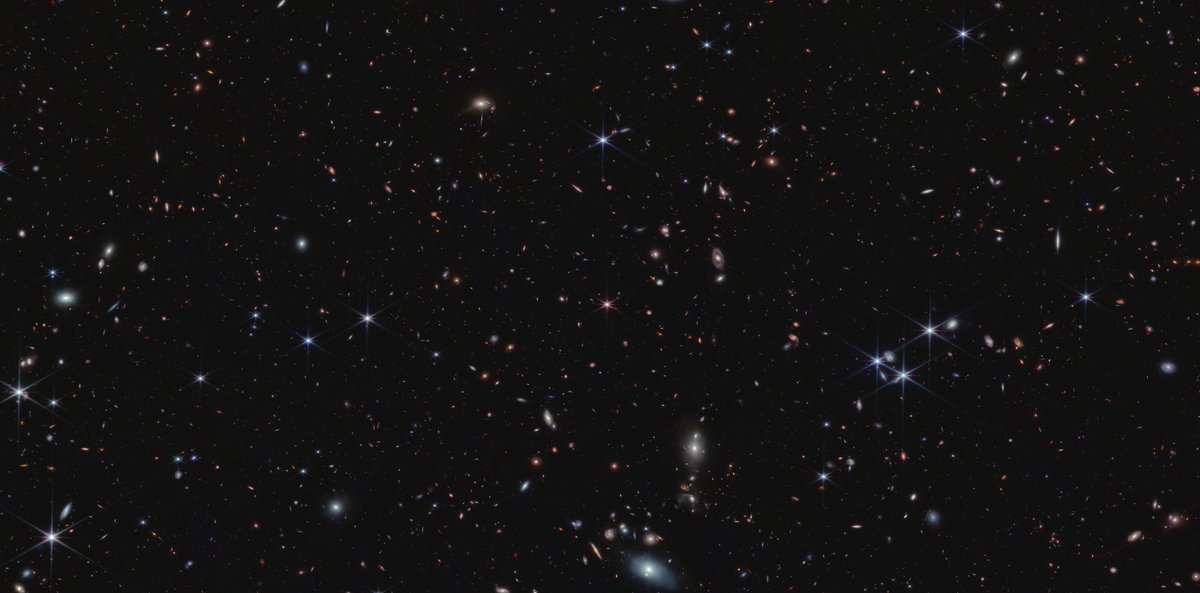🆕 This Webb view contains more than 20,000 galaxies. Researchers anchored their observations on quasar J0100+2802, an active supermassive black hole that acts like a beacon. Read more: 🔗 esawebb.org/images/EIGER1/ or 🧵👇 

The quasar is at the centre of the image, and appears tiny and pink with six prominent diffraction spikes, acting like a flashlight, illuminating the gas between it and the telescope. 1/6
The team studied 117 galaxies, about 900 million years after the #BigBang. They focused on 59 galaxies in front of the quasar, some of which can be seen here: esawebb.org/images/EIGER2/ 2/6
These galaxies existed just before the end of the Era of Reionisation, when the Universe contained a patchwork of gas – some opaque and some transparent (or ionised). 3/6
⚛ After the #BigBang, gas in the Universe was incredibly hot and dense. Over hundreds of millions of years, the gas cooled. Then, the Universe hit “repeat.” The gas again became hot and ionized – and transparent. 4/6
Researchers sought evidence to explain what happened during this period and the team’s results more concretely define the conditions at this specific “stop” in the Universe’s history. 5/6
Webb shows that these transparent regions exist around galaxies and that galaxies have fully ionized the gas within a 2 million light-year radius. 6/6
#WebbSeesFarther
#WebbSeesFarther
📷 @NASA , @esa , @csa_asc , S. Lilly (ETH Zurich), D. Kashino (Nagoya University), J. Matthee (ETH Zurich), C. Eilers (MIT), R. Simcoe (MIT), R. Bordoloi (MIT), R. Mackenzie (ETH Zurich), A. Pagan (STScI)
• • •
Missing some Tweet in this thread? You can try to
force a refresh

 Read on Twitter
Read on Twitter













